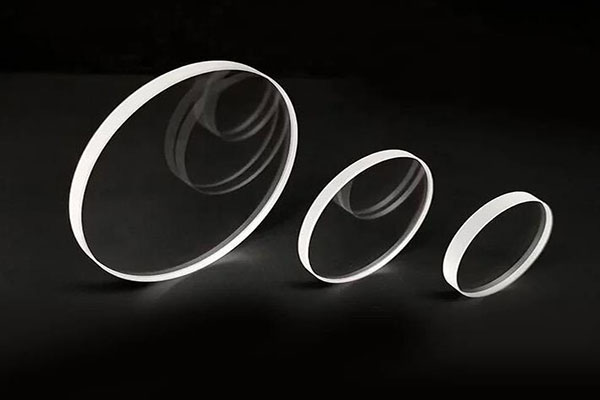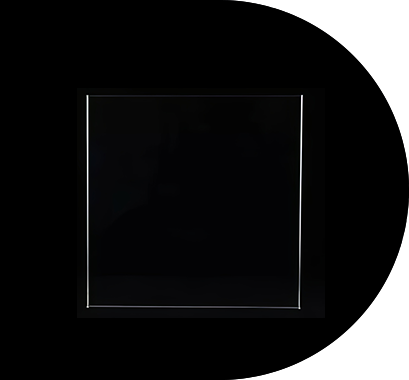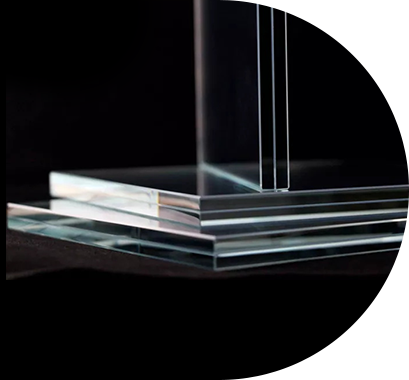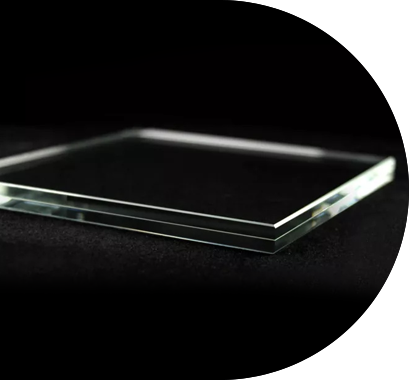Ultra-white laminated glass is a premium architectural glass product known for its exceptional clarity, brightness, and color neutrality, achieved by using low-iron float glass layers combined with lamination technology. It is specifically designed to offer higher optical performance and aesthetic appeal compared to standard laminated or conventional float glass.
1. Low-Iron Content – The Core Distinction
-
The key feature that defines ultra-white glass is its very low iron oxide content, typically less than 0.01%.
-
Standard float glass contains higher levels of iron (usually 0.1% or more), which gives it a greenish tint, especially noticeable in thicker panes or when viewed on edge.
-
By reducing iron content, ultra-white glass offers a colorless, highly transparent appearance that enhances brightness and visibility.

2. Laminated Construction
-
Ultra-white laminated glass consists of two or more sheets of low-iron glass bonded together using a transparent interlayer such as:
-
PVB (Polyvinyl Butyral)
-
SGP (SentryGlas Plus) for higher structural integrity
-
EVA (Ethylene Vinyl Acetate) for decorative or outdoor uses
-
-
This lamination improves impact resistance, safety, sound insulation, and UV protection, while maintaining the ultra-clear optical quality.
3. Superior Light Transmittance
-
Ultra-white laminated glass typically transmits 91–92% of visible light, depending on thickness and interlayer type.
-
In contrast, standard laminated glass with regular float glass may only achieve 85–88% light transmittance, and often distorts colors with a faint green hue.
-
This makes ultra-white glass ideal for environments that demand accurate color rendering and brightness, such as galleries, retail storefronts, and high-end interiors.
4. Aesthetic and Visual Purity
-
Ultra-white laminated glass provides a neutral, crisp look with no visual distortion or coloration of objects seen through the glass.
-
Standard laminated glass, due to its higher iron content, can make whites appear warmer or duller and reds or blues appear slightly muted.
-
The visual purity of ultra-white glass is especially valued in:
-
Luxury architecture
-
Glass railings and facades
-
Display cases and product showcases
-
Interior partitions and decorative applications
-
5. Applications and Intent
-
While standard laminated glass is often selected for general safety and security glazing (e.g., in windows, doors, and curtain walls), ultra-white laminated glass is chosen for applications where optics and aesthetics are critical.
-
It is also used where natural daylighting is a design priority, helping to enhance the interior environment without altering colors.
6. Cost and Production Differences
-
Producing ultra-white glass requires more refined raw materials and additional processing to eliminate impurities like iron.
-
As a result, ultra-white laminated glass is more expensive than standard laminated glass but offers significantly higher visual and aesthetic value.
Summary Table: Ultra-White vs. Standard Laminated Glass
| Feature | Ultra-White Laminated Glass | Standard Laminated Glass |
| Iron Content | Very low (ultra-clear) | Higher (green tint) |
| Transparency | 91–92% light transmittance | 85–88% light transmittance |
| Color Neutrality | Excellent (no color distortion) | Mild green tint, color shift possible |
| Glass Type | Low-iron float glass | Standard soda-lime float glass |
| Aesthetic Quality | High-end, pure, bright appearance | Functional, less clarity |
| Applications | Luxury facades, displays, interiors | General architectural safety glass |
Conclusion
Ultra-white laminated glass is defined by its low-iron composition and laminated structure, offering a superior level of clarity, light transmission, and color neutrality. It is a step above standard laminated glass in terms of both visual performance and design sophistication, making it the material of choice for premium architectural and interior applications where optical quality and visual impact are paramount.






